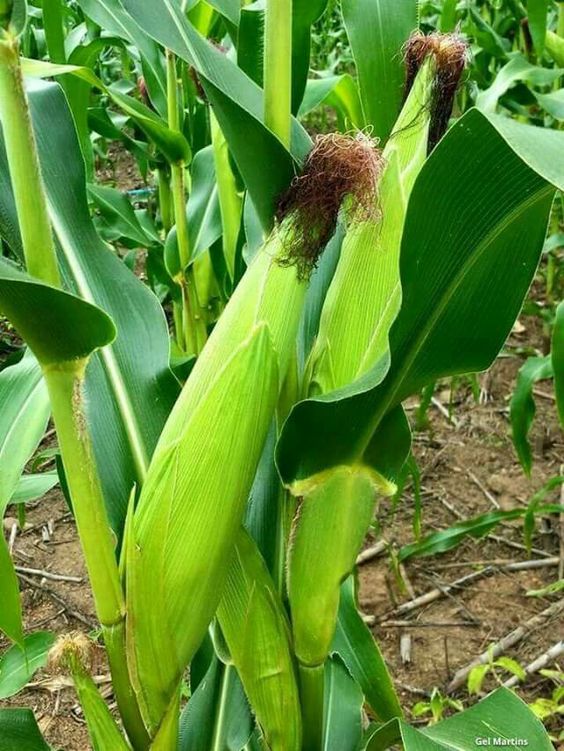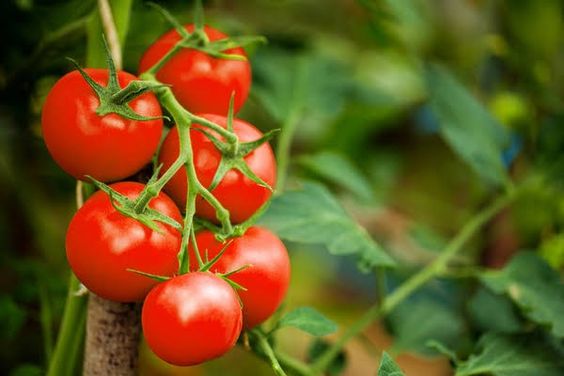Regenerative Agriculture: Cultivating a Sustainable Future Through Innovative Farming Practices
Regenerative Agriculture is an innovative farming approach that emphasizes the restoration and enhancement of soil health, biodiversity, and ecosystem resilience. Unlike conventional farming methods, which often focus solely on yield and profit, regenerative practices aim to create a sustainable agricultural system that benefits not only farmers but also the environment and society at large.
Contents
- 1 What is Regenerative Agriculture?
- 2 Advantages of Regenerative Agriculture
- 3 Differences Between Regenerative Agriculture and Other Agricultural Practices
- 4 Benefits of Regenerative Agriculture
- 5 Goals of Regenerative Agriculture
What is Regenerative Agriculture?
Regenerative agriculture is a holistic farming approach that focuses on revitalizing and restoring the health of agricultural ecosystems. It goes beyond merely sustaining current practices by actively improving soil health, increasing biodiversity, and enhancing the overall vitality of the land. At its core, regenerative agriculture aims to create a farming system that is ecologically balanced, resilient, and capable of producing food sustainably for future generations.
The foundation of regenerative agriculture is the principle of soil health. Healthy soil is critical for thriving plant and animal life, as it serves as a reservoir of nutrients, water, and living organisms. Regenerative practices such as reduced tillage, cover cropping, and composting help to increase soil organic matter, which in turn enhances soil structure, nutrient availability, and microbial activity. These improvements allow soils to retain water more effectively, cycle nutrients efficiently, and become more resistant to erosion and degradation. Over time, the soil becomes more fertile and productive, reducing the need for chemical inputs like synthetic fertilizers.
Another key principle is promoting biodiversity, both above and below the ground. Regenerative agriculture encourages the cultivation of a wide variety of crops, the integration of livestock, and the maintenance of natural habitats. This diversity supports a healthy ecosystem, where different species work together to manage pests, enrich the soil, and pollinate crops. A biodiverse farming system is more resilient to environmental challenges, such as diseases, pests, and extreme weather events.
Holistic management is also central to regenerative agriculture. This approach recognizes the interconnectedness of all elements within a farming ecosystem, from the soil and plants to water and air. Farmers using regenerative practices make decisions based on the long-term impacts of their actions, considering how each aspect of the system affects the others, and prioritizing practices that lead to long-term ecological balance and sustainability.
What is Regenerative Farming?
Regenerative farming can be viewed as the practical application of the principles of regenerative agriculture at the operational level. It involves specific techniques and methodologies that farmers can implement to achieve regenerative outcomes. This includes the incorporation of innovative practices tailored to the unique conditions of each farm, such as soil type, climate, and local ecosystems.
While regenerative agriculture emphasizes the overall philosophy and approach, regenerative farming is about the day-to-day actions taken by farmers to implement that philosophy on the ground.

Advantages of Regenerative Agriculture
1. Improved Soil Health
Regenerative agriculture emphasizes soil regeneration through practices such as cover cropping, reduced tillage, and organic amendments. Healthier soil leads to improved nutrient cycling, enhanced water retention, and increased organic matter.
2. Enhanced Biodiversity
Implementing diverse cropping systems and integrating livestock can increase biodiversity on farms. This promotes ecosystem stability, pest control, and resilience to diseases.
3. Climate Resilience
Regenerative practices help farms adapt to climate change by improving soil structure and health, which can mitigate flooding and drought conditions. Healthy ecosystems are better equipped to withstand extreme weather events.
4. Increased Farm Productivity
Farms that adopt regenerative practices often report higher yields over time. Healthy soils and ecosystems can support more productive crops and livestock.
5. Economic Benefits
Regenerative agriculture can reduce input costs (such as fertilizers and pesticides) and enhance market opportunities through organic and sustainably grown products, potentially leading to higher profit margins.

Differences Between Regenerative Agriculture and Other Agricultural Practices
Understanding the distinctions between regenerative agriculture and other farming approaches is crucial for grasping its unique benefits.
1. Conventional Agriculture vs. Regenerative Agriculture
Conventional agriculture often focuses on maximizing yields through the use of synthetic fertilizers, pesticides, and monoculture practices. In contrast, regenerative agriculture prioritizes ecosystem health and sustainability.
Key Differences:
- Input Use: Conventional agriculture relies heavily on chemical inputs, while regenerative agriculture emphasizes natural processes and organic inputs.
- Soil Management: Conventional practices often lead to soil degradation, whereas regenerative practices seek to improve soil health.
- Biodiversity: Conventional farms often focus on single-crop systems, while regenerative farms promote biodiversity.
2. Organic Agriculture vs. Regenerative Agriculture
Organic agriculture avoids synthetic inputs and emphasizes sustainable practices, but it may not necessarily focus on regenerative outcomes. Regenerative agriculture goes further by actively improving the health of the soil and ecosystem.
Key Differences:
- Focus on Soil Health: While organic practices are beneficial, regenerative agriculture specifically targets soil regeneration and ecosystem enhancement.
- Holistic Approach: Regenerative agriculture considers the entire ecosystem and seeks to enhance interconnections between soil, plants, and animals.
3. Sustainable Agriculture vs. Regenerative Agriculture
Sustainable agriculture seeks to maintain current farming systems without depleting resources, focusing on practices that do less harm. Regenerative agriculture aims to restore and enhance ecosystems, making it a more proactive approach.
Key Differences:
- Restoration vs. Maintenance: Regenerative agriculture is focused on restoring ecosystems, while sustainable agriculture often aims to maintain the status quo.
- Long-Term Vision: Regenerative agriculture envisions a future where ecosystems are actively improved through farming practices.
Benefits of Regenerative Agriculture
The benefits of regenerative agriculture extend beyond just environmental impact; they encompass social and economic aspects as well.
1. Environmental Benefits
Regenerative agriculture plays a crucial role in addressing environmental challenges, such as climate change and biodiversity loss. The practices employed contribute to carbon sequestration, water conservation, and ecosystem restoration.
Environmental Outcomes:
- Carbon Sequestration: Regenerative practices, such as cover cropping and agroforestry, can store significant amounts of carbon in the soil.
- Water Conservation: Improved soil health enhances water retention, reducing the need for irrigation and conserving water resources.
- Ecosystem Restoration: Regenerative practices can help restore degraded land, enhancing habitat for wildlife.
2. Social Benefits
By promoting local food systems and supporting smallholder farmers, regenerative agriculture can enhance community resilience and food security.
Social Outcomes:
- Community Engagement: practices often involve local communities in decision-making processes, fostering a sense of ownership and stewardship.
- Food Sovereignty: Supporting local food systems enhances food sovereignty and promotes access to nutritious food.
- Healthier Diets: Regenerative practices often lead to the production of healthier foods, contributing to improved public health.
3. Economic Resilience
By reducing dependency on external inputs, regenerative practices can help farms become more economically resilient and self-sustaining.
Economic Outcomes:
- Diverse Income Streams: Regenerative agriculture encourages diversification, allowing farmers to create multiple income streams through various products.
- Increased Profitability: Sustainable practices can lead to lower costs and higher returns, improving overall farm profitability.

Goals of Regenerative Agriculture
1. Restoration of Soil Health
The primary goal of regenerative agriculture is to improve soil health through practices that enhance organic matter, nutrient cycling, and microbial activity.
Strategies for Restoration:
- Organic Amendments: Incorporating compost and cover crops can boost soil fertility and health.
- Reduced Tillage: Minimizing soil disturbance preserves soil structure and supports microbial life.
2. Enhancement of Biodiversity
Regenerative agriculture aims to promote a diverse ecosystem, which is essential for pest control, pollination, and overall farm resilience.
Strategies for Enhancement:
- Crop Diversity: Planting a variety of crops can support beneficial insects and pollinators.
- Integrating Livestock: Incorporating livestock into cropping systems can enhance nutrient cycling and land use efficiency.
3. Climate Mitigation
Regenerative agriculture contributes to global climate change mitigation efforts by sequestering carbon and reducing greenhouse gas emissions.
Strategies for Mitigation:
- Cover Cropping: Growing cover crops can capture atmospheric carbon and store it in the soil.
- Agroforestry: Integrating trees into farming systems enhances carbon sequestration and provides additional environmental benefits.
4. Economic Viability
Ensuring that farming practices are economically viable for farmers is crucial for the long-term success of agriculture.
Strategies for Viability:
- Market Opportunities: Farmers can tap into growing markets for sustainably produced food and regenerative products.
- Cost Reduction: By reducing dependency on synthetic inputs, farmers can lower production costs.
5. Community Engagement
Engaging local communities in practices fosters a sense of ownership and commitment to sustainable farming.
Strategies for Engagement:
- Education and Training: Providing resources and training for farmers on regenerative practices can promote community involvement.
- Collaboration: Building partnerships with local organizations can enhance community support for regenerative initiatives.
agriculture represents a transformative approach to farming that prioritizes the health of our ecosystems and communities. By focusing on soil health, biodiversity, and climate resilience, regenerative practices offer a pathway toward a more sustainable and productive agricultural future. As more farmers adopt these practices, the potential for widespread environmental, economic, and social benefits becomes increasingly tangible.




